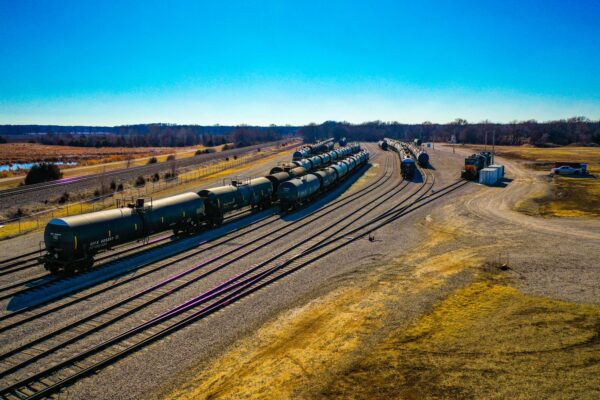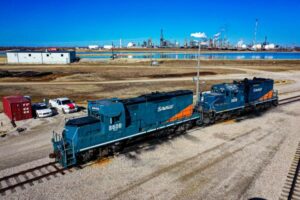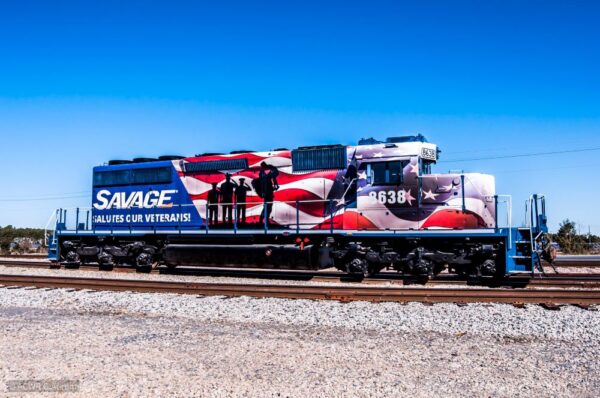
Transloading Addresses the Challenges of Long-Distance Trucking
When it comes to the supply chain of material goods, the focus on sustainability and affordable transportation is typically the focus for the first and last miles. Those concerns don’t go away during the middle of the products’ journey, however. Savage is dedicated to finding a better way to get our Customer’s products where they need to go via transloading.
The Big Picture
Short-haul jobs may not require a variety of transportation solutions to be cost effective and sustainable. Long-haul jobs usually do. When the mileage is long, or the topography diverse, transloading is the answer. Transloading eases the burden in a variety of ways, including:
- Reducing the carbon footprint,
- Optimizing overhead costs, and
- Improving the health of the supply chain.
Savage’s network of transloading terminals spans throughout North America. They handle all kinds of products within the infrastructure and agriculture sectors.
Transloading is a Win for Sustainability
According to the Federal Railroad Administration, transportation is the greatest contributor of greenhouse gas (GHG) emissions in the country. For businesses that rely on that infrastructure, transloading is a great step towards sustainability. Central to that strategy is rail, in part because:
- Rail only accounts for 2% of total transportation GHG.
- Rail has much better fuel economy, averaging over 400 miles per ton-gallon of fuel.
- Rail experiences over 80% less friction on steel wheels. This reduces the negative consequences of relying on rubber tires.
- Rail can reduce the need for frequent trips. In fact, one railcar can hold up to 4 semi-trailers-worth of cargo.
With over 50 transloading railports in operation, rail is key to Savage’s Customer success model. Sustainability efforts don’t end at the railroad track, however. The marine sector is doubling down on its environmental stewardship, as well.
Building off of a decade of study, the International Marine Organization is updating its strategy to reduce GHG from ships. That strategy consists of:
- Reducing carbon emissions by at least 40%, per voyage, by 2030
- Striving for 10% of zero-emission fuel usage
- Reducing total annual GHG emissions by 30%
- Net-zero GHG emissions by 2050
Couple these advancements with efforts to create renewable trucking fuel, and transloading becomes the best chance for sustainability in the transportation sector. The financial benefits are significant as well.
The Best Transportation is Also Affordable Transportation
Long-distance hauling is not easy — infrastructure, personnel, safety, and maintenance all require special attention. Before the product even reaches its destination, the company has already made significant investments.
Transloading eases the burden here as well, providing a solution for affordable transportation. The main driver of these savings is efficiency, which manifests in a few key ways:
- Using intermodal transportation helps in budgeting fuel and plotting the best routes.
- Travel time and storage time is optimized as transloading encourages a quicker turnaround.
- Transloading gives options to Customers, giving them more control over their costs.
Even just one company, like Savage, can maintain these efficiencies in ways that maximize savings. The expertise of Savage’s Team Members means they can optimize the transloading process. And that optimization creates even more affordable transportation.
Shifting the Focus from Long-Haul Trucking to Transloading
Transporting products and materials is a part of many businesses’ operation plan. In some instances, long-haul transportation becomes a necessary obligation. This can mean dealing with a lot of issues that cost companies time, money, and resources. The environment can be similarly affected.
These challenges are addressed, and largely solved, by transloading. By relying on this method, we can revitalize sustainability, diversify our options, and enjoy affordable transportation. Similarly, Customers will get their products faster and more efficiently. In short: with transloading, everybody wins.
If you would like to find out how Savage’s transload network can assist your business, contact us.



